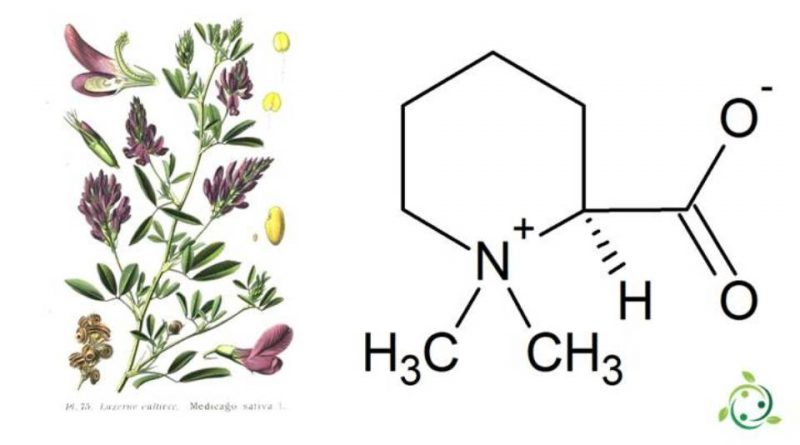Homostachydrine
Homostachydrine
Homostachydrine, whose term in the official IUPAC nomenclature is: (2S) -1,1-dimethylpiperidin-1-ium-2-carboxylate, is an alkaloid.
This substance, also known as pipecolic acid betaine, has the brute or molecular formula C8H15NO2.
Homostachydrine, in nature, is found in green coffee beans of the Robusta and Arabica species.
Even after roasting the coffee beans, the homostachydrine content is not affected by the treatment due to its remarkable heat stability. This makes it a good marker for determining the content of Robusta and Arabica species in roasted coffee blends.
Homostachydrine is also a potential indicator of coffee consumption as it can be found in both human serum and human urine.
Homostachydrine is also present in the seeds and leaves of alfalfa (Medicago sativa L.).
Specifically, in addition to alfalfa, it can be isolated from the seeds of Achillea (Achillea millefolium L., 1753).
Homostachydrine is also found in the fruits, seeds and leaves of orange, lemon and bergamot.
Warning: The information shown is not medical advice and may not be accurate. The contents are for illustrative purposes only and do not replace medical advice.

